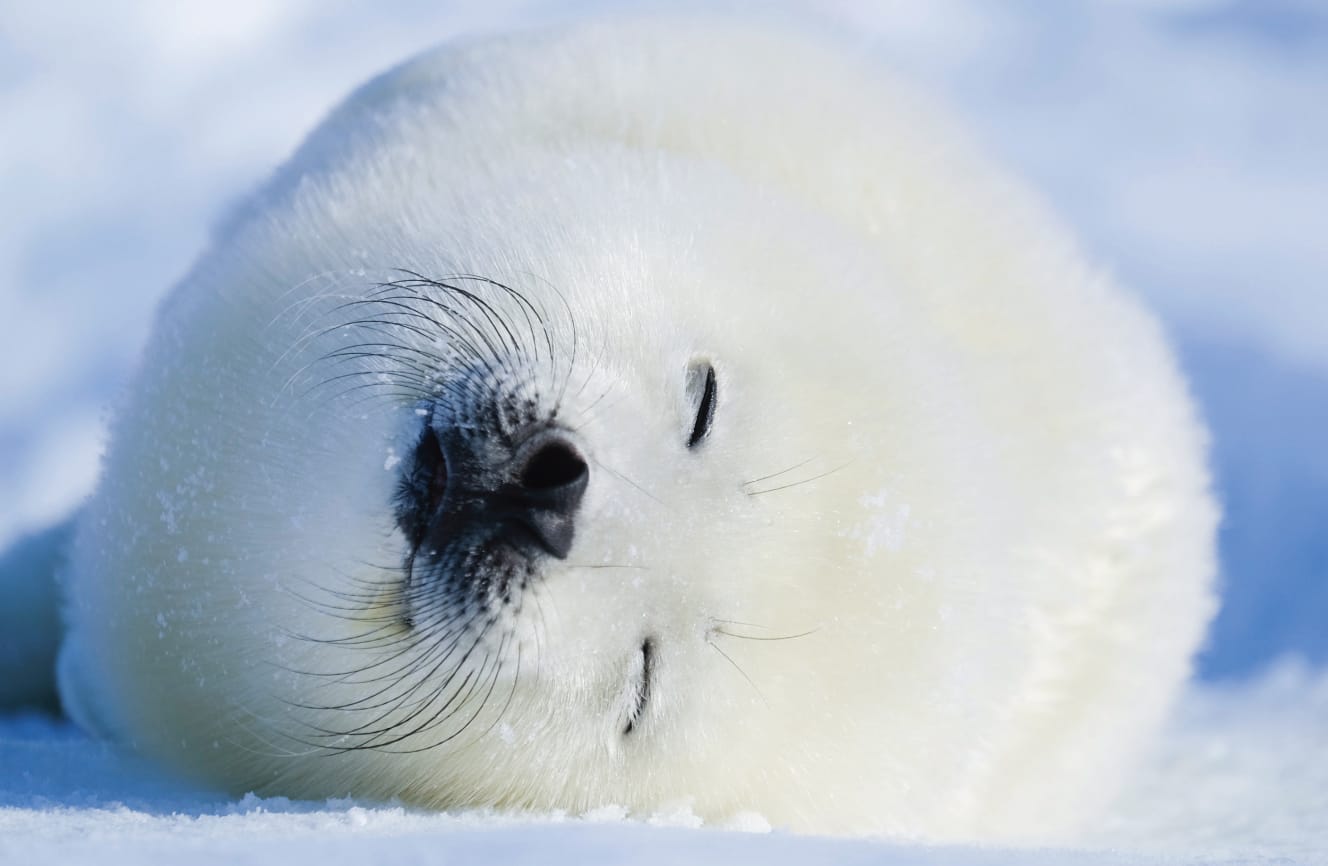In Memoriam: How a Scoop Photographer Became a “Healing Animal Photographer
In Memoriam: Rei Ohara, 60 years old
A baby seal, a zebra moth, and a monga …… all squinted at his nature photos.
When taking pictures of criminals being escorted or politicians traveling in cars, he would get on the hood and shoot from the front because the windows were smoked in when he shot from the side. So he would get on the hood and shoot from the front. His nickname was “Obara the Hood.
Didn’t you know that Noboru Takeshita, who rebelled against Kakuei Tanaka, was turned away at the door when he delivered his New Year’s greeting in 1987? If you look at the photo from that time, you can see Obara at the front. Next to him is K from “Focus” and behind him is me. It’s a frustrating photo that symbolizes Obara’s rushing power.
Shigeki Miyajima, 60, a news photographer, and Rei Ohara, 60, were the same age. Both graduated from university and became exclusive photographers for this magazine in 1984. When I was just starting out, I kept falling behind Mr. Ohara,” he said. “To put it bluntly, the Friday days were my enemy. The Friday days were my enemy, a thorn in my side. Even when we were together in the darkroom (where photos are developed), we didn’t speak to each other,” Miyajima says with a wry smile.
Obara and I became friends at my wedding. When the bride and groom kiss, you usually take a picture in front of them, right? Obara walked up behind us and took a super-wide shot. It was a great picture with all the attendees holding their cameras over the bride and groom.
It was around the same time that he quit his job as an exclusive photographer, saying, “I want to be active in the world.
Mr. Obara won LIFE magazine’s “The Best of Life” award for his photographs of the Tiananmen Square protests. Mr. Miyajima said that he felt that he had become unreachable.
After a while, a photo book called “Baby Seals” came out from Bunshun UNESCO, and I was surprised to see the credits. I was surprised when I saw the credits: ‘Obara in a hood’? No way. I thought. It was a photo of Tiananmen Square that triggered my change of career. Students were holding hands to pacify each other so they wouldn’t attack the tanks, but they were introduced as “students holding hands to stop the tanks. LIFE did not approve of the change and said they were fed up with the coverage.”

Aisha (15), who won a prize in the 12th Wildlife Photography Contest in her third year of junior high school and became the youngest person ever to have a solo exhibition at Fujifilm Photo Salon Tokyo, reveals the true face of animal photographer Rei Ohara.
The first thing he taught me was to hold the camera at the animal’s eye level. The first thing I was taught was to hold the camera at the animal’s eye level, and I was able to get a much better picture of a zebra moth landing on the snow by lying on my stomach and releasing the shutter. Incidentally, the photo that won me the Asahi Shimbun Award in the 37th “Nature in Japan” Photo Contest was of a zebra moth that Mr. Obara and I photographed in Hokkaido in February of 2008. In the presence of his other students, he said, “This is the best photo we’ve taken. Mr. Ohara said to me, ‘This is the best photo we’ve taken, and it will win an award.
It was six months before his death that Miyajima received a call from his friend after a long absence.
It was six months before he passed away. “He wanted to take a picture of a flying monga, and he asked me if I had a remote device that could shoot from a distance. When I heard that he had passed away, I really thought he had been attacked by a bear. I was in shock.
There are more things I want to photograph, but I never miss anything. There are more things I want to take, but there is nothing I missed.


Zebra Enaga



Japanese flying squirrel



Rei Ohara
Born in Tokyo in 1961. Influenced by her father, who was a camera enthusiast, she began taking photographs in high school. After working as an exclusive photographer for Friday, she changed her photo name to Scarlett O’Hara and the famous photographer Man Ray in order to enter the world market.
In 1990, he became an animal photographer, and produced a series of healing scoops. He passed away from lung cancer on November 17, 2009.
His major works include “Shima Enaga-chan,” ” Baby Seals: Secrets of Cuteness,”and “More Shima Enaga-chan” (all published by Kodansha).



From the February 11, 2022 issue of FRIDAY
PHOTO: Rei Kohara




